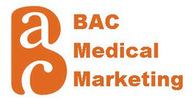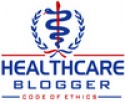Even if we make much more effective use of clinical time and energy, however, Green’s formula isn’t going to get us far enough fast enough. The baby boom generation of physicians is fast nearing its “sell by” date. In 2010, one quarter of the 242,000 primary care physicians in the US were 56 or older. One in six general internists left their practices in mid-career. Many more hardworking clinicians delayed retirement due to the 2008 financial collapse.
Few manpower specialists have noted the cohort effect likely to manifest itself shortly. A continued economic recovery and, more importantly, a recovery in retirement plan and medical real estate asset values will lead as many as 100,000 physicians of all stripes to leave practice in the next few years. We will be replacing a generation of workaholic, 70-hour-a-week baby boom physicians with Gen Y physicians with a revealed preference for 35-hour work weeks. During this same period, we’ll be adding 1.5-1.7 million net new Medicare beneficiaries a year and enfranchising perhaps 25 million newly insured folks through health reform. “Train wreck” is the right descriptor of the emerging primary care supply situation.
Green suggests that this demand pressure could be accommodated with a much smaller replacement cohort of primary care docs if we: increased each physician’s patient visits slots to 28 per day; enabled more same-day scheduling; had physicians practice in pods of 3-8 docs where any doc in the pod could see one anyone else’s patients; leveraged patient portals to substitute electronic visits for in-person ones; and plugged in physician “extenders.” Implementing all these innovations across the entire health system has the effect of doubling physicians’ patient panels to more than 5,000 and, voila, no physician shortage.
Real-World Problems With The Model Green Lays Out
Several of these redesign elements aren’t going to be well received either by physicians or their patients. I’ve visited real-world group practices organized this way. They reminded me of nothing so much as “I Love Lucy’s” famous chocolate factory assembly line. It was exhausting simply watching the physicians sprint through their days. You wanted to install oxygen carrels for them to catch their breath. Gen Y docs aren’t going to practice 28-slot days, with intensive “break times” to answer their emails and make phone calls. Neither are Gen Y nurse practitioners.
And without the sustaining influence of genuine relationships with their patients, the new generation of primary care physicians are likely to burn out even faster than their boomer elders did. Moreover, aging patients will need relationships with physicians who understand the context for their chronic disease risks and can motivate them to manage those risks. Even though they will like on-demand scheduling and e-visits, baby boomer patients, in particular, aren’t going to embrace a “bullpen” approach to their primary care coverage. Twenty-eight-slot physician work days staffed by physician pods is an inferior primary care product.
In Group Health’s Factoria medical home practices, panel sizes went the other way, shrinking to 1,800 rather than growing to 5,400. Visit times were doubled, to about 30 minutes, not halved. Previous Group Health primary care practice redesigns improved physician productivity, but at a terrible price: increased turnover and markedly reduced professional satisfaction.
The Factoria redesign leveraged Group Health’s successful patient portal, physician extenders, and better scheduling and resulted in improved clinician morale and patient satisfaction. And, most importantly for Group Health’s business model, the redesign markedly reduced emergency visits and hospital costs per-member per-month. Similarly, the widely cited ProvenCare Navigator model developed at Geisinger Clinic achieved panel sizes of about 2,500, less than half of Green’s 5400 panel target.
The Limitations Of Potential Strategies To Increase Productivity
Better use of nurse practitioners. Leveraging physician extenders is a key to making more “medical homes” work properly. Here too, however, there are cohort problems. The current nurse practitioner population is even more “boomer intensive” than the physician population is. In 2008, 63 percent of nurse practitioners in the US were over the age of 45, and 15 percent over the age of 60.
While Green suggests that nurse practitioners have been growing faster than population (e.g. faster than 0.8 percent a year), that growth won’t be anywhere near enough to offset the impending retirement of the baby boom NP cadre, many of whom work a lot of unpaid overtime completing their documentation tasks. And many of the new NP’s are being snarfed up by the expansion of federally qualified health centers and by non-traditional care providers like the Minute Clinics. There won’t be many left over for redesigned primary care practices.
Electronic health records. Green’s optimism about the potential productivity improvements from electronic health records might also be misplaced. Despite, or perhaps because of, the pressure from meaningful use to automate office practices, physician offices added 162,000 workers from 2007 to 2011, even with a 10 percent shrinkage of visit volume. Many of these new hires were medical secretaries, physician assistants, and the like.
If there are productivity offsets for practicing physicians from automating medical records, they are hard to detect. Most physicians I’ve talked to about their EMR conversions are spending less time with patients and more time feeding their EMRs coding information and complying with new Medicare documentation requirements. The result: richer coding and more dollars from fewer patients. Unless documentation requirements are reduced, it is not clear that the EMR will actually make it easier for physicians, or other clinicians for that matter, to see more patients.
A Potential Way Forward
There are potential solutions in addition to the ones Green identified. They include payment models that markedly consolidate payment transactions (bundling or partial capitation), and more targeted documentation requirements focusing more tightly on patient safety and outcomes. We can also, per Green, reduce “unnecessary” visits by markedly improving patient communication and leveraging texting, email and social media linkages.
Green does not address the market barriers to adequate primary care physician supply. Presently, primary care physicians earn about 55 percent of the income of their procedure oriented colleagues, a number that will be barely dented by the Affordable Care Act’s nominal increase in Medicare’s evaluation and management payments. Unless you’re a trust funder, or someone with no medical school debt, selecting primary care as a specialty doesn’t make a lot of economic sense. Primary care docs will still be paying off loans in their sixties.
To surmount this problem, we must markedly increase per-hour compensation for primary care physicians, or they will continue selecting life-style friendly subspecialties instead. We’ll all have great skin, but we’ll be waiting three months to see a primary care physician.
This problem isn’t going to wait for Commissions, Blue Ribbon panels and learned pontification. And it isn’t going to be wished away by clever economic modeling. Despite Green’s optimism, we are going to experience a horrendous shortfall of front-line caregivers in the next decade. Medicare beneficiaries whose physicians retire in the next ten years are going to have great difficulty replacing them. Making more intelligent use of caregiver time is an urgent priority, but it is not going to be enough to meet the rising demand for primary care services in the next 20 years.

 RSS Feed
RSS Feed































